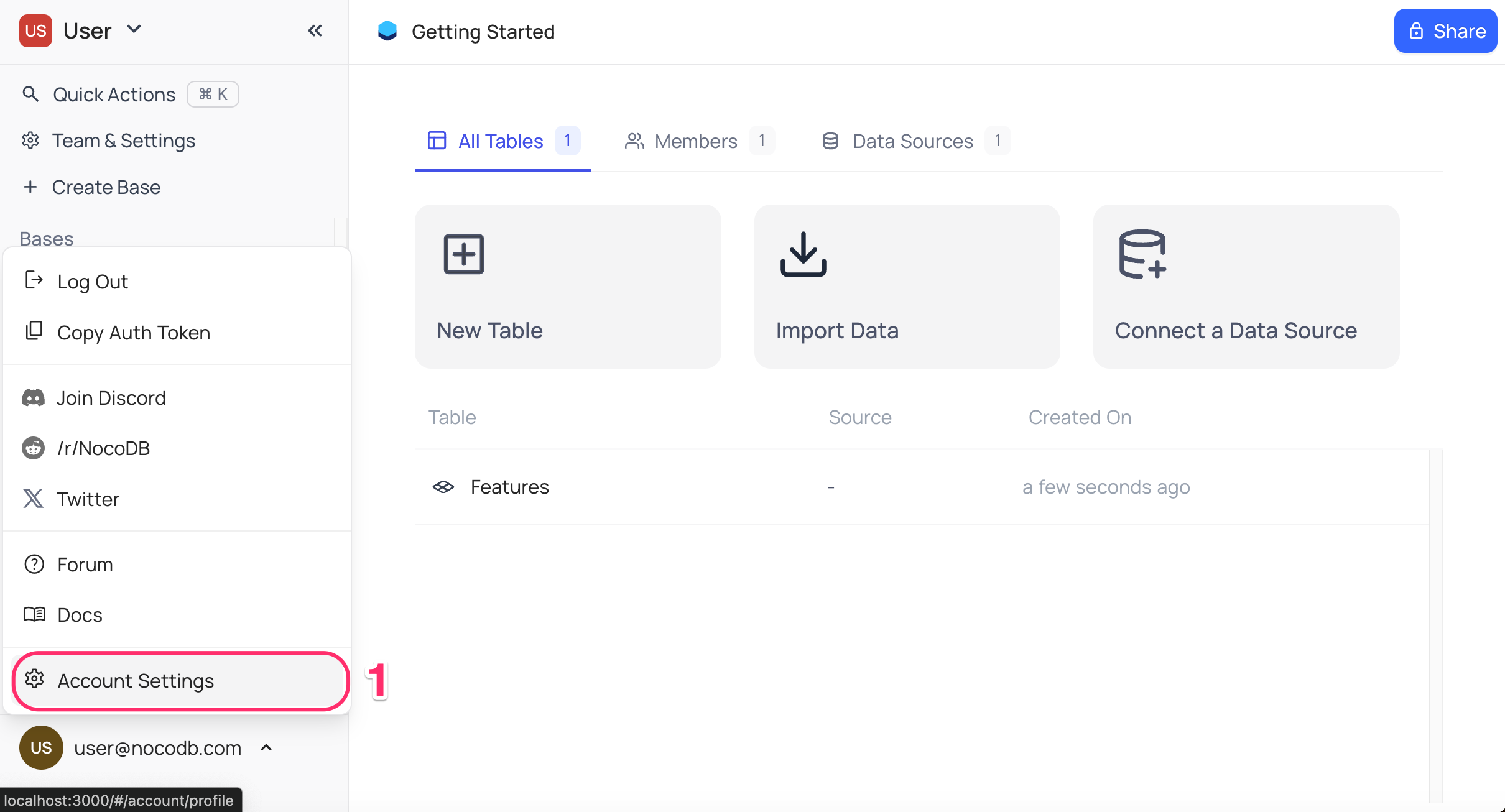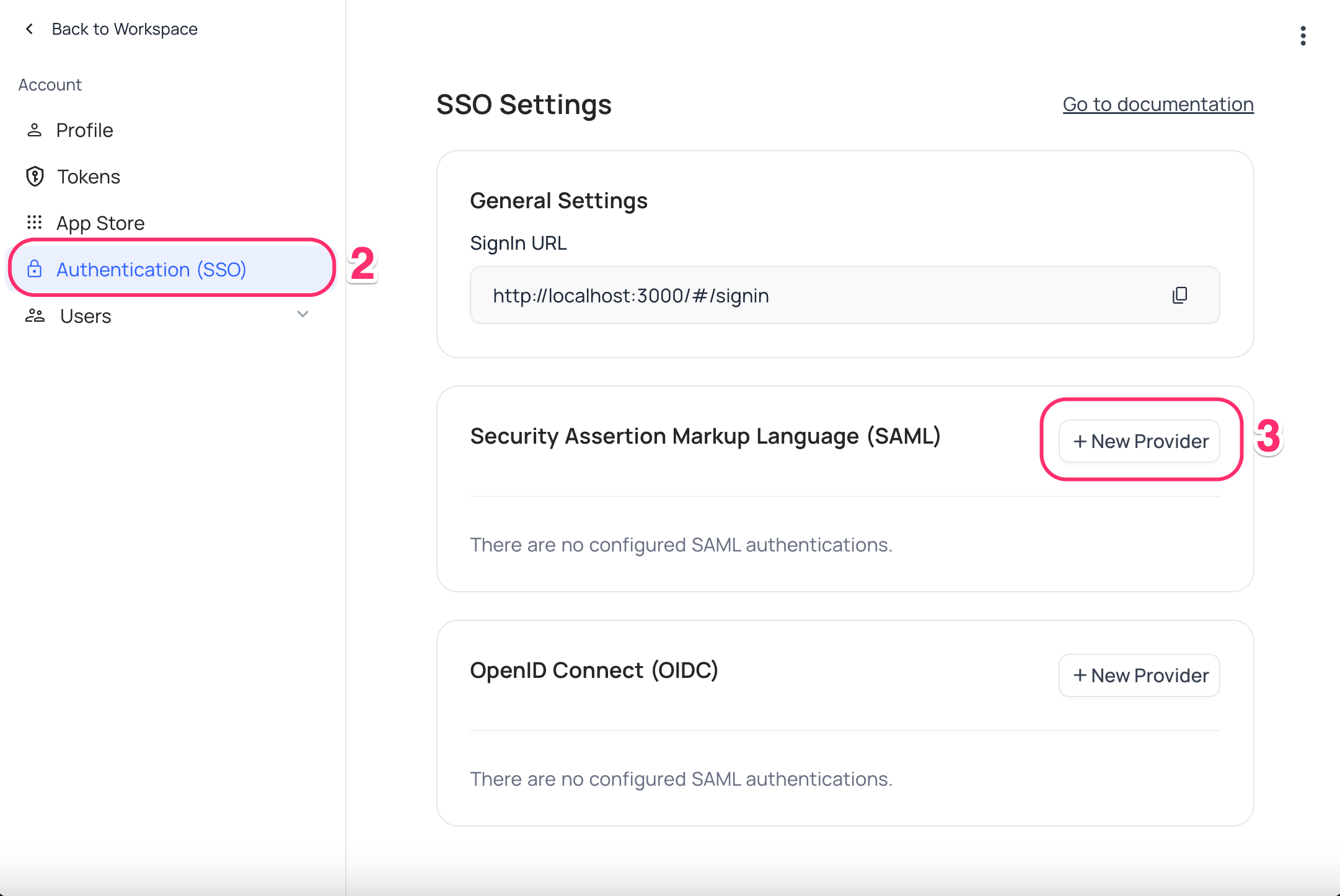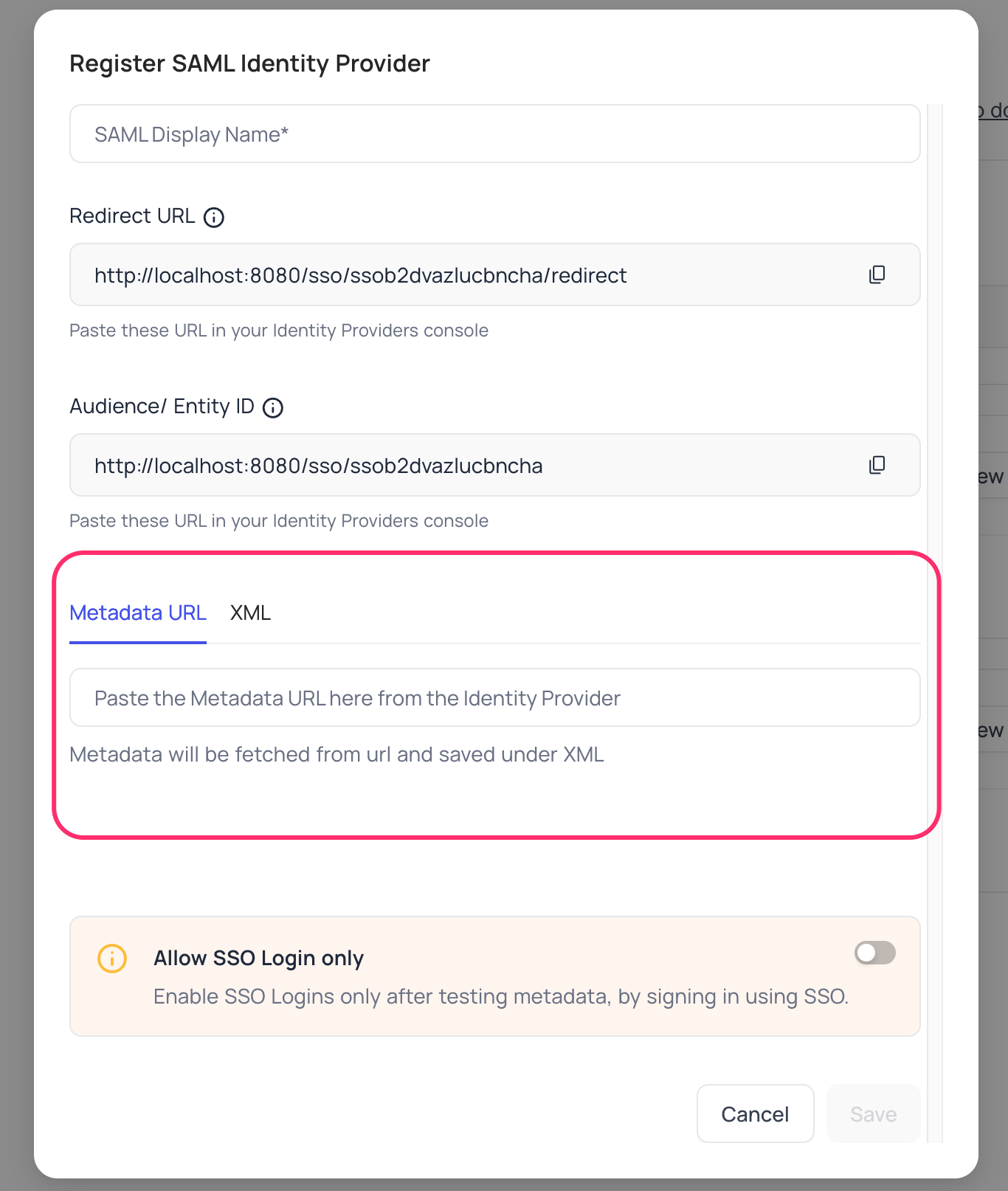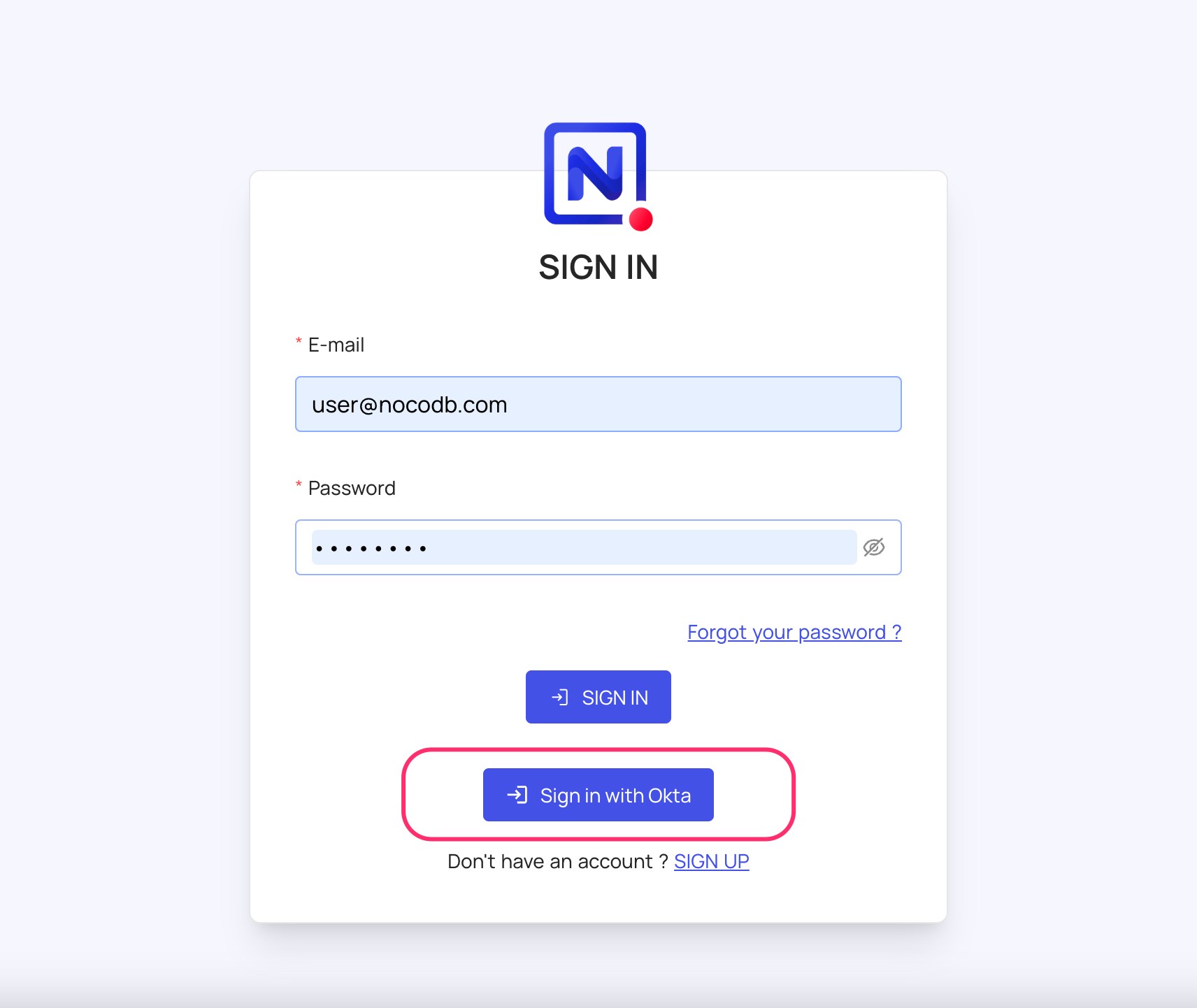Keycloak
info
For SSO Access - please reach out to sales team.
This article briefs about the steps to configure Keycloak as Identity service provider for NocoDB
NocoDB, Retrieve SAML SSO Configuration details
- Go to
Account Settings - Select
Authentication (SSO) - Click on
New Providerbutton - On the Popup modal, Specify a
Display namefor the provider; note that, this name will be used to display the provider on the login page - Retrieve
Redirect URL&Audience / Entity ID; these information will be required to be configured later with the Identity Provider



Keycloak, Configure NocoDB as an Application
- Access your Keycloak account
- navigate to
Clientsmenu - select
Clients listtab > ClickCreate clientbutton.
- navigate to
- In the
Create Clientmodal,General Settingstab:- Select
SAMLas theClient type - Specify
Audience/Entity IDretrieved from NocoDB as theClient ID - Click
Next
- Select
- In the
Create Clientmodal,Login Settingstab,- Specify
Redirect URLretrieved from NocoDB as theValid Redirect URIs - Specify
Redirect URLretrieved from NocoDB as theValid post logout redirect URIs - Click
Save
- Specify
- On the
Client details,Settingstab,- navigate to
SAML Capabilitiessection - Specify
Name ID formatasemail - Enable
Force Name ID FormatandForce POST Binding - navigate to
Signature and Encryptionsection - Enable
Sign Assertions - Click
Save
- navigate to
- On the
Client details,Keystab,- Disable
Signing keys config>Client Signature Required
- Disable
- Navigate to
Realm Settings>Endpoints- Copy
SAML 2.0 Identity Provider MetadataURL
- Copy
NocoDB, Configure Azure AD as an Identity Provider
- Go to
Account Settings>Authentication>SAMLKey - Insert
Metadata URLretrieved in step above; alternatively you can configure XML directly as well Save

For Sign-in's, user should be able to now see Sign in with <SSO> option.

note
Post sign-out, refresh page (for the first time) if you do not see Sign in with <SSO> option